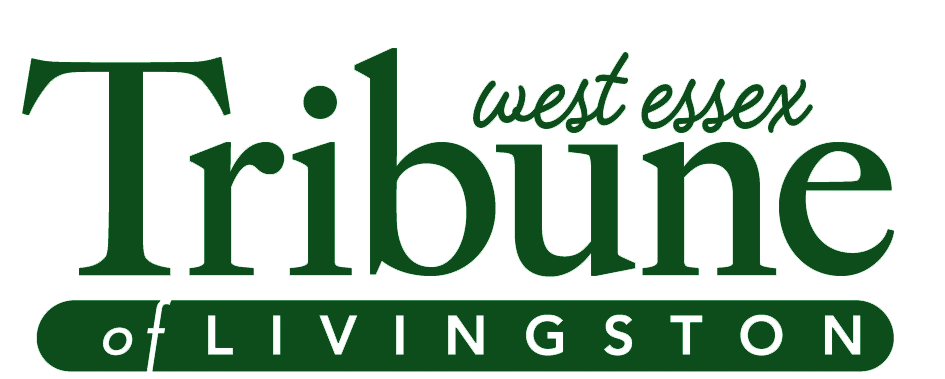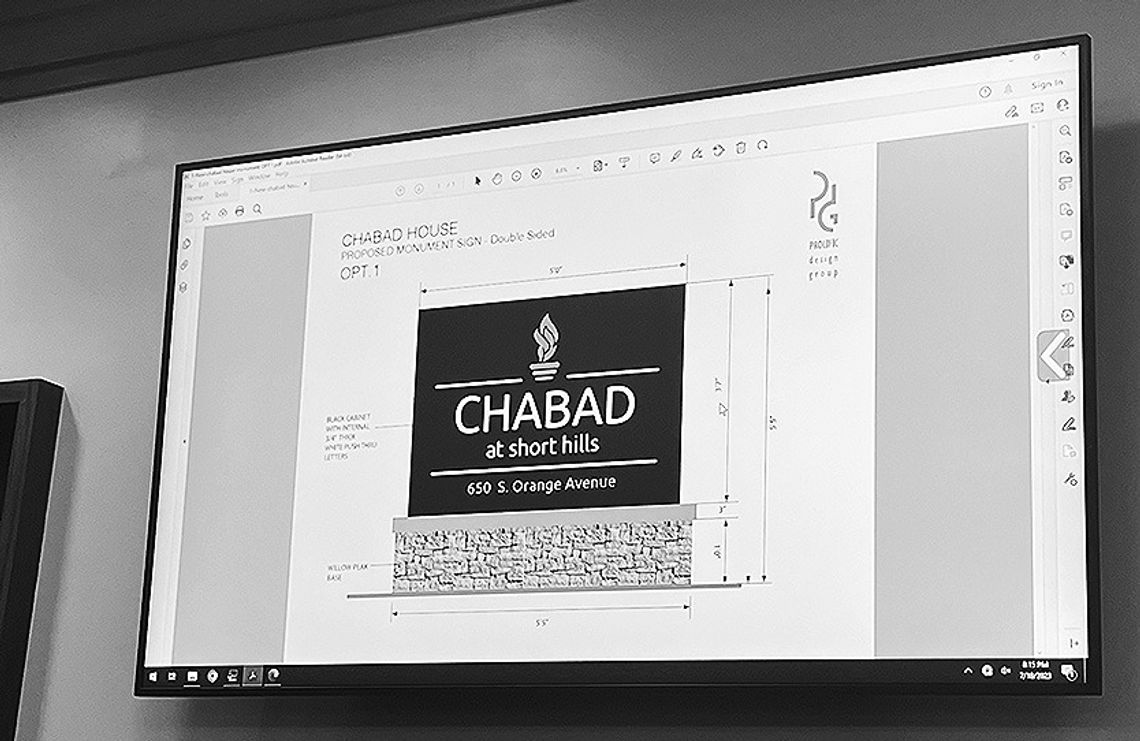Planning Board members delayed a newly introduced application and approved another after its continued hearing during its Tuesday, July 18, special meeting.
Chabad Center Signage
The Board delayed its vote on a previously approved application by 18 Corp., D/B/A Ahavat Torah at its special meeting on June 20. The applicant sought Planning Board approval to add a monument sign and signage on the façade of the Chabad of Short Hills-Center for Jewish Life at 650 South Orange Avenue.
This includes moving the monument sign back nine feet from the right of way sign of South Orange Avenue, rather than the ordinance’s 17.5 feet requirements -necessitating a variance - otherwise it wouldn’t be visible to travelers.
The Board ultimately decided to reconvene on July 18 to continue reviewing Chabad’s application. That day, attorney Carly Clinton of 18 Corp. said that the testimony remained the same from the last hearing, and is seeking the same two variances.
Richard Keller, expert engineer and planner, verified that the following changes were made: benefactors’ names are removed; an added street address and logo; and increased size of “Chabad” text. The sign remains the same at 4’ 11', and there was no variance requested for the area of the sign.
“It’s small in scale, it’s elegant, it’s streamlined,” Keller said. “We think this is good planning.”
The Board approved the applicant’s variance requests.
33 Sycamore Avenue
Steven Barckley sought approval to subdivide the property, at 33 Sycamore Avenue, into two parcels. Attorney Brian Romanowski represented Barckley for a subdivision, and said that the owner had been paying taxes on two lots adjacent to each other.
One of the lots was purchased by TriOwners, but Romanowski says that it was an “invalid transfer” under the merger doctrine.
Keller represented Barckley as an expert engineer and planner, appearing as a planner for this application. His evidence reflected the neighborhood of 33 Sycamore Street in accordance with the Planning Board’s ordinance, looking at 400 feet within the property in question.
The neighborhood survey shows 20 parcels within that designated area, and about half of those properties are 9,000 square feet in size or under with 60 feet of frontage. The subject parcels, lots 29 and 30 of block 2602, are requested to be divided and amass 9,158 and 9,000 square feet, respectively. Keller said that this data serves to show how this subdivision is in line with surrounding properties.
“In aggregate,” Keller said, “that would be 18,158 square feet.” In a neighborhood analysis, that combined square footage is more than twice the size of half of surrounding homes, Keller said.
The applicant proposes to reestablish the same line that existed as it had when the property was first developed. It wasn’t until 1953 that the two lots were bought together and have since been under common ownership.
“It was always purchased with the idea that there were two lots,” Keller said. “And we essentially want to put that line back where it was.”
One of the most prevalent critiques of this application was the ambiguous definition of neighborhood atmosphere. One side of Sycamore Avenue consists of homes larger in size while the other end of the street reflects the opposite. In the immediate area of the applicant’s property, however, smaller lots are conducive to surrounding homes.
Two neighbors responded during public comment, expressing concerns for the applicant’s lack of building footprint. Ross Pearlson of Bear Brook Court asked the Board and applicant to consider how a home built on the currently empty lot will affect neighbors behind Sycamore Avenue, like himself.
“It creates two more nonconforming lots,” Sean Moronski, professional planner on behalf of Pearlson, said. “It’s not just the line drawn. You want to change what the zoning allows.”
Yanzhong Niu, whose father-inlaw lives on lot 28, also expressed concern for what kind of home will be built on the land – and if one can be built at all.
“I just don’t think it’s economically viable to buy the lot and [build] a conforming property,” Niu said.
As proposed by Board Vice Chair Steve Santola, the Board will walk through the neighborhood and revisit the matter at its next meeting on August 3 at 7:30 p.m.



